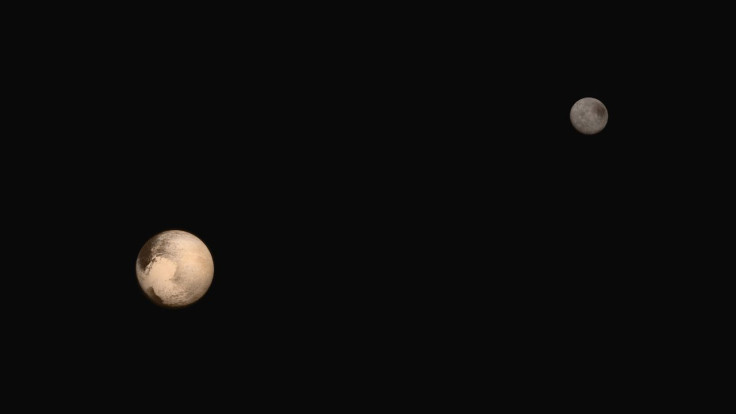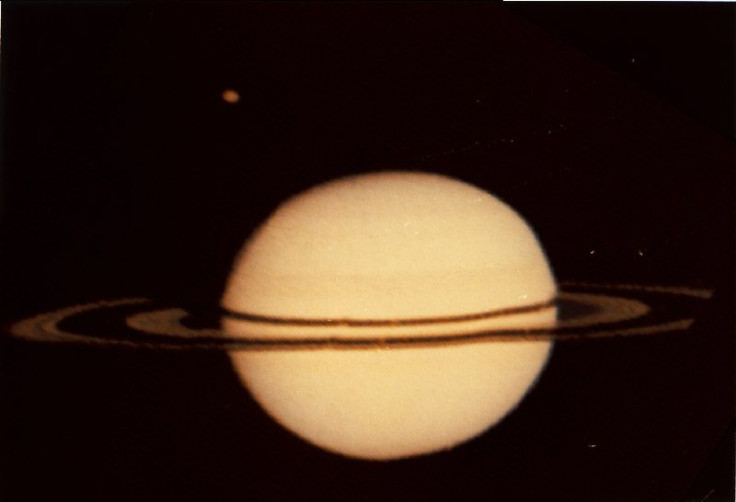NASA New Horizons After Pluto: Spacecraft Will Continue To Send Data And Join Four Other Deep Space Travelers

NASA's New Horizons mission has been a hit. Everyone loves Pluto and the dwarf planet has been a viral sensation. We've seen ice mountains, frozen plains, a heart-shaped area and its atmosphere drifting into space. New Horizons is now millions of miles away from Pluto and will continue exploring the Kuiper Belt while sending back loads of data from last week's flyby. The spacecraft will not be alone, as it will join four other NASA missions in deep space.
New Horizons is powered by a nuclear generator that lets it travel beyond Pluto without much help from the sun, the Guardian reported. The Kuiper Belt is home to several dwarf planets -- including Eris, Haumea, Makemake -- and several other larger objects that could fit that classification.
There's 50000 Quaoar and its moon; 90377 Sedna and its unusual orbit; and a new object, 2012 VP113, that also follows its own path. The latter two trans-Neptunian objects are interesting because their orbits take them far out into the Kuiper Belt. The elliptical orbit is also a bit perplexing, according to the Planetary Society. There's also the possibility of a Planet X, although the chances are considered slim.
The data from New Horizons' flyby around Pluto will be sent back to Earth for the next 16 months and scientists will spend years looking through the treasure trove. There could be new moons or a ring system, and we'll likely learn more about Pluto's smaller moon. New Horizons will pick a new target in October and begin the mission's second phase.
The Voyager Missions
New Horizons will not be the first spacecraft to travel through the Kuiper Belt. In terms of successful missions, it's hard to beat Voyager 1 and Voyager 2. The spacecraft were launched in 1977 and have been busy sending data ever since. The computers onboard the twin spacecraft are no match for today's smartphones -- Voyager 1 and Voyager 2 have 69.63 kilobytes of memory -- but that hasn't stopped them. After a tour of the solar system, the Voyager mission went interstellar -- going beyond the sun's influence -- and Voyager 1 accomplished the feat on Aug. 25, 2012. It is the farthest manmade object and it continues to send data daily.
Voyager 2 is expected to reach interstellar space after 2016. Each spacecraft sends data back to NASA's Deep Space Network and it takes around 17 hours for a message from Voyager 1 to reach Earth, according to NASA. Voyager 1 and Voyager 2 will continue sending data back to Earth into the 2020s and will likely continue floating in space forever until it crashes into something or encounters life. If the latter happens, Voyager 1 and Voyager 2 are carrying a "Golden Record" featuring math, music and art from Earth. You can track the spacecraft here.
The Pioneer Missions

While Voyager 1 and Voyager 2 are continuing their science missions, Pioneer 10 and Pioneer 11 have ceased operations. Pioneer 10 sent its last signal to Earth on Jan. 23, 2003. The spacecraft was launched March 2, 1972, and was the first to directly observe Jupiter. It will continue its life floating around into interstellar space. As of 2011, NASA pegged its distance at around 9.6 billion miles from the sun on the opposite side of the solar system.
Pioneer 11 was launched April 5, 1973 and was the first spacecraft to directly observe Saturn. Earth last received a signal from the spacecraft on Sept. 20, 1995, and is believed to be around 7.8 billion miles from the sun, as of 2011.
© Copyright IBTimes 2024. All rights reserved.





















